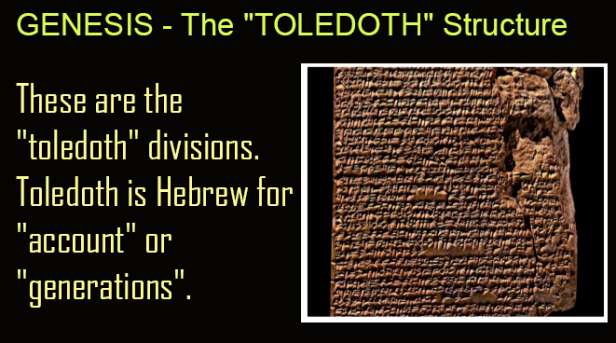What do we need to know regarding Hinduism?
The religion of Hinduism began in India. It cannot be traced to any individual who started it. This religion was founded before Christ came to earth. It is a collection of various beliefs from Aryans who migrated to that country and combined with beliefs of natives of India.

Teachings may differ depending on the sect but there are some basic teachings compared to the truth that we learned from God’s word:
Hinduism has different theistic schools, sects and traditions. Out of six philosophies (darshanas), five are apathetic about the existence of God or his role as creator. They acknowledge the existence of individual souls, but not God. The Vedanta philosophy believes in God as creator and upholder. Others namely Nyaya, Vaisheshika, Samkhya, Yoga and Purva Mimansa reject the idea. They recognize Nature as source of materialism and perceptual reality. While the philosophies of Hinduism are in doubt about God, he is vital to conventional Hinduism. Most Hindus believe in the existence of supreme God. They worship him as Brahman, Isvara, Paramesvara, Shiva, Vishnu, Krishna, Paramatma, Parandhama, and Narayana. They also worship many gods and goddesses, demigods, prophets, philosophers, spiritual teachers, animal gods, planetary deities and ancestors either as independent entities or parts of the Supreme Being. They believe in worship of images and meditative techniques. They worship images, idols, statues, drawings, and paintings of chosen deities. They do this in temples and their homes. Many practice reflection on the invisible and nebulous Self to experience peace. It is also part of their spiritual practice.
What are the Scriptures in Hinduism?
This include Vedas, Upanishads and Bhagavad Gita as scriptures generally accepted by Hindus. Some are regional texts like Tantric Agamas, Bhagavata Purana , Yajnavalkya Smriti and Naalayira Divya Prabhandham.
Most of these texts exist in Sanskrit. Others were composed in regional languages like Tamil.

Hindu scriptures offer devotees different options to practice spirituality as well as emphasize importance of purity, sincerity and unselfish devotion. They recommend different means to reach deliverance and self-purification. These include means s of selfless actions (karma), self-knowledge (jnana), self-absorption (atma-samyama), self-devotion (bhakti), and renunciation (sanyasa).
Rig Veda is the most reliable Hindu scripture because of content and notable antiquity. The Rig Veda (“Veda of Hymns”) is one the world’s oldest literature. Some scholars estimate this at 3000 BC although final revision of text could have happened in 1000 B.C. (Basham, et al., 1997, p. 522).
Is It True that Hindu Scriptures is the Oldest of All Sacred Books Along with the Bible?
The Hindu Vedas were written before Moses lived, but not before Noah did. Moses wrote the Pentateuch, but almost certainly edited Genesis from pre-existing documents. So although the Vedas predate the Pentateuch; they do not predate the source documents for Genesis.
It is probable that Genesis was a book that was written over several thousand years. Therefore it is likely that these written records were passed down from father to son until they reached Moses, who compiled, edited and re-wrote them into the Book of Genesis found in the Hebrew Bible.

How do we know this? The first is a listing of toledoths in the Hebrew (translated into English as “these are the genealogies/generations of”) which imply a signature of the person who just finished writing that section of the book. Of course, none of the original biblical manuscripts, including the book of Genesis, are extant, but if this theory is correct (and it has been adopted by several young-earth creationist theologians), then it means that the finger of God wrote down the first two chapters of Genesis and then directly told Adam some of the events of later verses in Gen 2, who then recorded them.
Most theologians believe that this was Adam’s account running from Genesis 2:4 through Genesis 5:1 when Adam would have passed the book onto his son Seth and then down the line of sons. Gen. 2:10 states that a river went out from Eden… in the present tense, it is because Adam wrote it as he saw it, and when Moses compiled the records, he did not change the verb tenses. Just as in the New Testament, we see different writing styles among the writers, but all are guided by the Holy Spirit. So Adam recorded things differently from Noah, who recorded things differently from Shem, who recorded things differently from Jacob. Each with their own personality, but guided inerrantly by the Holy Spirit. Based on this Toledoth theory, then, it was Terah who wrote the genealogies of Shem down through the beginning of his own (Genesis 11:10b-27a). If this theory is correct, then at least the Hebrews had a written account of the history of the world, and some moral instruction from God. It also seems from the book of Job, that non-Hebrews were aware of the true God and also knew His laws, and had a consciousness of sin. Ultimately though, this is all we have, and of course, Hebrews 11 to show us what the patriarchs’ faith looked like.
The presence of the eleven toledoths (“these are the generations of”) in Genesis does have significance. To understand the Hebrew term ‘toledot,’ it will be necessary to examine the nature and format of communications. Clay was the preferred material upon which the wedge-shaped symbols were impressed. It was normal practice for single communications of to commence with some sort of title, followed by the body of the text, and then a colophon, which would sometimes contain, among other things, a hint as to the identity of the scribe, or owner of the tablet and the date when the tablet was written.
Now, if the eleven sections of Genesis were originally separate documents, each would have had a “colophon” at the end describing at least the owner and contents of the document. Thus, in connection with the Genesis “toledot,” the principal facts concerning the individual involved have been recorded before the incidence of the phrase in question, and that they are not recorded after its occurrence.
Therefore, the fact that Genesis 5:1 says, “This is the BOOK (normal Hebrew word for “book”) of the account/generation (toledoth) of Adam” is strong evidence that when Moses wrote Genesis in its present form he was working with existing written documents passed on from the patriarchs. This also answers the “God evolved” hypothesis of Christianity disproved which in a nutshell assumes that since Hebrew is a more recent language than other ANE languages, and Judaism is a more recent religion than cultic Canaanite religions, then it must have borrowed from them (respectively). This is also the basic argument from the “Gilgamesh older than Moses” argument, which is invalidated by this argument. This again can be shown to be a faulty assumption, especially if Moses compiled historical records recorded from the time of the first man Adam down through Jacob, and then from Jacob’s son Joseph. At the time of the Exodus, or shortly thereafter, these records were probably given to Moses from the tribe of Ephraim or Manasseh, when the bones of Joseph were entrusted to Moses (Exodus 13:19).
Does Science Agree with Hindu Scriptures?
Scientific Mistakes in Hinduism
1. According to Puranas, the Earth is Flat- NARASINGA PURANA – Page 169 – Abitha a Sinthamani maintains the earth is flat. On the contrary, scientists have proven the earth is round.
Purānas (“ancient lore”) are accounts in the itihāsa (“it certainly happened”) tradition. It is a fable that describes creation of the Universe, origin of evil, and history of Indian civilization. All these highlight legendary kings, sages, and gods. You can find different religious guidelines about caste laws, customs, ceremonies, pilgrimage, and temple building in the main book. If the Vedic samhitās are like the Psalms, the Purānas refer to historical books of Samuel, Kings, and Chronicles.
2. Vishnu Purana is another astrological inaccuracy. VISHNU PURANA claims the sun is 800,000 miles while the moon is 2,200,000 miles away from the earth. Astronomy indicates the moon is nearer to the earth (240,000 miles). On the other hand, the sun is 93,000,000 miles away from the earth.
3. Markandeya Purana gives a completely wrong area about the earth- MARKANDEYA PURANA says the earth is 4,000,000,000 square miles. According to Astronomy, it is only 190,700,000 square miles.
4. Vedas / Puranas suggest people to look directly at the sun with naked eye. The Vedas and Puranas proclaimed all Hindus must pray to the sun-god SURYA. By doing this, one’s eyesight will improve by doing this every morning. Many Hindus perform this act of worship but their vision did not improve. India has the biggest number of blind people worldwide. They have 2.5 million totally blind citizens while 9 million have corneal blindness). Sun worship is not true. In fact, scientists and doctors advise people not to look at the sun directly since this can cause vision problems.
5. Mt. Meru is 100,000 times higher than Mt. Everest based on Hindu Scriptures. The Arya text during the 5th century AD maintains this belief in the fantastic Vedic Mt. Meru. It is allegedly 100, 000 times higher than Mt. Everest! The Matsya Purana declares: “It [Mt Meru] is golden and shines like fire. The eastern side has a white color like the Brahmans. The northern side is red like Kshatriyas. The southern portion is yellow similar to Vaishyas. The western is black like Sudras. It is 86,000 yojana high and 16, 000 of these are found on earth. Each of the 4 sids has 34000 yojanas. There are good-looking golden houses inhabited by spiritual beings. These are the Devas, singers like Gandharvas and their harlots called Apsaras. The Asuas, Daityas and Rakshasas also live here. — [ Matsya Pur. quoted in al-B. i.247 ]
The Universe Validates the Bible
1. The Earth Is Round
The Bible says the earth is round. Consider Isaiah 40:22 which mentions the “circle of the earth.” This is a correct description especially when the earth is seen from space. The earth always appears as a circle because of the round shape.
2.The Earth Floats in Space
Read the verse in Job 26:7 that says God “hangs the earth on nothing.” This might suggest an image of God hanging the earth like a Christmas tree ornament. Yet, it hangs on empty space.
3. Conservation of Mass-Energy
We can expect conservation of mass-energy based on the Scripture. The Bible states no new material can exist as indicated in John 1:3 and Genesis 2:2. John 1:3 mentions all things were made by God, and nothing existed other than Him.
4.) The Number of the Stars
The Bible often uses “stars of heaven” to symbolize a very big quantity. Genesis 22:17 teaches God would multiply Abraham’s descendants “as the stars of the heaven, and as the sand which is on the sea shore.”
5. The Ordinances of Heaven and Earth
The Bible states the universe obeys physical laws—“the ordinances of heaven and earth” (Jeremiah 33:25).
Did the Christians Borrow the Trinity From Pagans?
The gods of HINDUISM
The Gods of Hinduism always quarrel (Brahma, Vishnu and Shiva). On the other hand, the trinity of Christians does not even disagree but are unified. The Son honors the Father (John 17:3, John 14:28) and the Father honors the Son (Matthew 3:16-17, Hebrews 1:8).

Christianity VS Hinduism
Christianity and Hinduism have primary historical figures. However, only Jesus rose bodily from the dead. Many people in history were wise teachers or established religious movements. Hinduism has some intelligent teachers and earthly leaders. Yet, Jesus stands out. His spiritual teachings are confirmed by a test only divine power can pass.
This is death and bodily resurrection, which He prophesied and fulfilled in Himself (Matthew 16:21; 20:18-19; Mark 8:31, 1 Luke 9:22; John 20-21; 1 Corinthians 15). Hinduism says there is no absolute truth. Instead, it is based subjectively on individual belief.
Hinduism states life is a never-ending succession of rebirths (reincarnation) where all living things die in one bodily form but return in a different physical figure. Hindu teachings claim men need salvation from reincarnation to become gods. This salvation can be obtained through ceremonial works like yoga or having a teacher assigned to you. [This is shown in the Srimad Bhagavadgita, Chapter VIII, 27-28 which states, “No Yogi, O son of Prithâ, is deceived after knowing these paths. Therefore, O Arjuna, be thou steadfast in Yoga, at all times. Whatever meritorious effect is declared (in the Scriptures) to accrue from (the study of) the Vedas, (the performance of) Yajnas, (the practice of) austerities and gifts,—above all this rises the Yogi, having known this, and attains to the primeval, supreme Abode.” In short, the supreme Dwelling of the Imperishable, Supreme Brahman is achieved by merits like seriousness and gifts.]
Hinduism believes in many gods. One of their goddesses is Kali, who kills people at will for pleasure. Her lover-husband is called Shiva the Destroyer. This god is also cruel. It seeks to kill people just for the fun of it. Sometimes, the two gods are shown having sex. Shiva’s followers worship his male member or lingam.
The Bible says there is only one God (Ephesians 4:5-6). He does not delight in destroying lives (Ezekiel 33:11).
Hinduism promotes a class system where some people are considered superior and treated better than lower classes. [The four castes are denoted in the Manusmriti based on the laws of Manu.]
God’s word respect for persons (favoritism) based on socioeconomic status or any other worldly standing is evil (James 2:1-9).
Hindu gods do not forgive sins. They do not wish to save their worshippers. If someone commits sin, he or she must face the karma from those actions whether they are repentant or not.
The True God always shows his mercy and forgiveness to those who are really sorry for their wrongdoings. Many times, he reverses punishments if they are remorseful. (Isaiah 38:1-6; Jonah 3)
Ahisma is taught in Hinduism
Ahimsa means the State of No Violence. Hindus Respect All life forms. They wish to cause the least amount of harm if possible. This applies to Humans and Animals.
Will we allow cockroaches and mosquitoes inside the house to cause us sickness?
We can exterminate the fly, cockroach, or mosquito. These pests spread deadly germs and cause serious allergies. We must get rid of them from our homes and other environments.
“All winged insects that walk upon all fours are detestable to you. But among the winged insects that walk on all fours you may eat those that have jointed legs above their feet, with which to leap on the ground. Of them you may eat: the locust according to its kind, the bald locust according to its kind, the cricket according to its kind, and the grasshopper according to its kind. But all other winged insects that have four feet are detestable to you.”(Leviticus 11:20-23, NRSV)
Does Hinduism Accept Jesus Christ?

What can the Bible say about this?
“But FALSE PROPHETS arose among the people, just as there will be false teachers among you. These FALSE TEACHERS will infiltrate your midst with destructive heresies, even to the point of DENYING THE MASTER who bought them. As a result, they will bring swift destruction on themselves.”(2 Peter 2:1)






